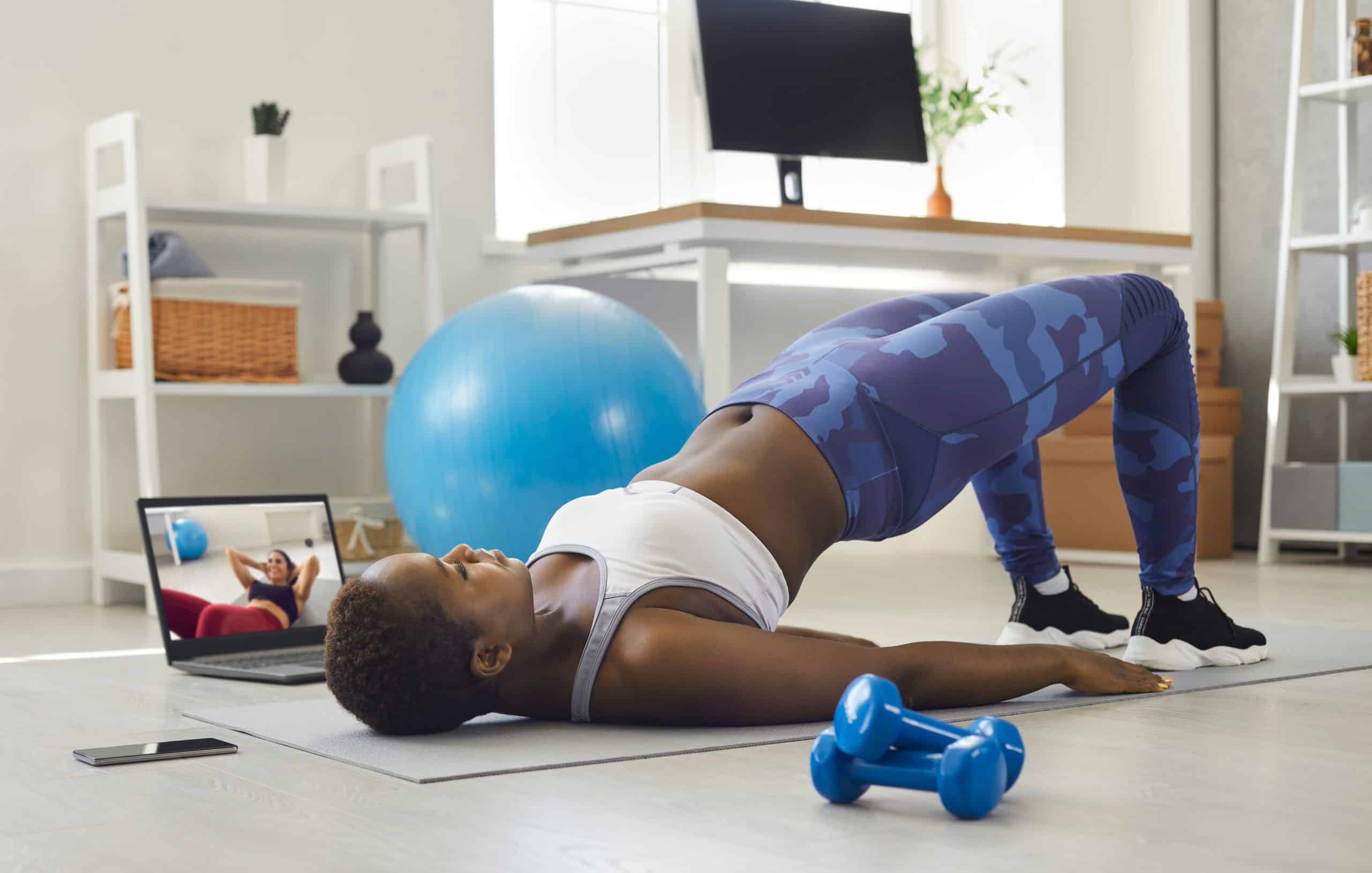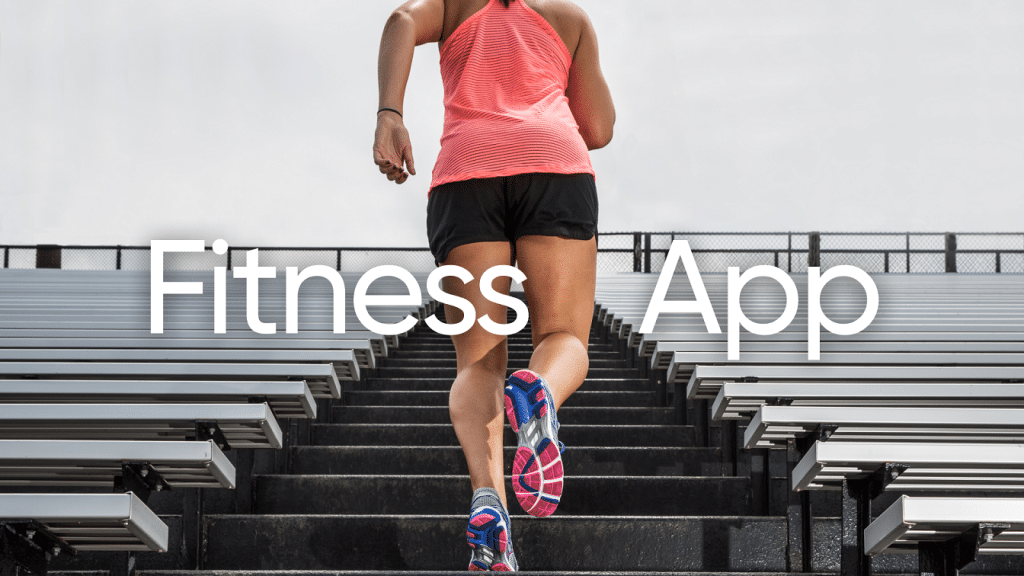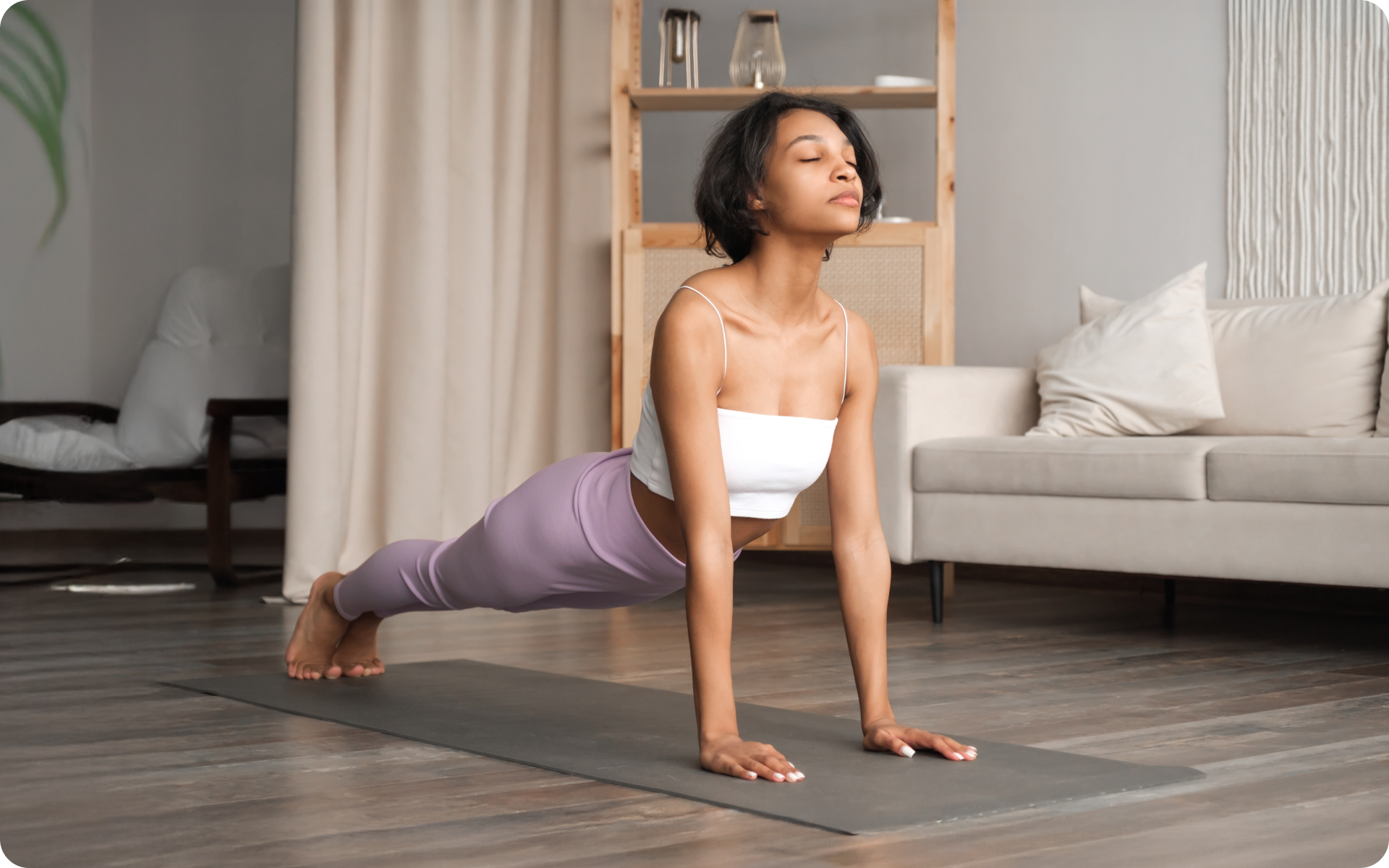Beginners often assume that the leg muscles should be the sole focus while cross-training.
Reality be what it is, there is another group of muscles that are equally important, yet often neglected: a runner’s hips.
The hip muscles play a crucial role in maintaining balance, providing flexibility, and ensuring a smooth stride. That said, they are frequently overlooked in training routines, which can lead to imbalances and injuries over time.
Incorporating hip-strengthening exercises into your regular workout regimen can drastically improve your running performance and safeguard you from potential physical setbacks.
This article will introduce seven hip-strengthening exercises, specifically designed for runners to enhance their flexibility, correct imbalances, and ultimately, bolster their running prowess.
Do Strong Hips Help Running?
Strong hips are indeed a runner’s best friend! From an anatomical perspective, the hips are central to every step taken while running. They act as a pivotal hinge between the upper and lower body, controlling the motion and stability of one’s stride (15).
Picture this: When running, each stride starts with a forward swing of one leg. This action is initiated by the hip flexors, which are located at the front of the hips.
As the foot lands, hip extensors, found at the back of the hips, help to push the body off the ground and propel it forward.
Meanwhile, the inner and outer hip muscles—the adductors and abductors—work together to keep the legs aligned and prevent them from veering off to the side (23).
Without a strong set of hips, this entire process can become unbalanced, leading to inefficiencies in stride and potentially even injury. So it’s fair to say that strong hips don’t just help with running—they’re essential to it.
BetterMe app will provide you with a host of fat-frying fitness routines that’ll scare the extra pounds away and turn your body into a masterpiece! Get your life moving in the right direction with BetterMe!
Does Strengthening Hips Make You Faster?
Yes, strengthening your hips can make you a faster runner.
Your hips are the fulcrum of your body’s running mechanism, and their strength can positively impact your speed (4). When your hip muscles are strong, they can generate more power with each stride, which can help increase your speed.
Enhanced Stride Length and Power
First, stronger hips can enhance your stride length and power . In the context of running, stride length is the distance covered with each step, and power refers to the force applied to propel your body forward.
As per a study published in the journal of Experimental Biology (16), a larger support force, which is influenced by hip strength, produces a larger stride length. This means that effective hip strengthening exercises can contribute to an increased stride length, and therefore, speed.
Hip strengthening exercises for runners with resistance bands are particularly effective in this regard. These exercises target the hip flexors, hip abductors, and glutes – all key muscles involved in running.
By improving the strength and flexibility of these muscles you can enhance your stride length and power, making you a faster runner.
Improved Balance and Stability
Second, stronger hips can improve your balance and stability when running . According to the National Institute of Health, hip muscle strength is an important contributor to running performance on level or hilly ground (11).
Hip and knee strengthening exercises for runners, for instance, can strengthen the muscles around these joints, improving your balance and stability. This can result in a smoother, more efficient running stride, which can help increase your speed.
Hip abductor strengthening exercises for runners are particularly beneficial for improving balance and stability. The hip abductors, which include the gluteus medius and minimus, are responsible for stabilizing the pelvis during running.
Strengthening these muscles can reduce pelvic drop, a common issue among runners, leading to a more efficient and faster stride.
Reduced Risk of Injury
Finally, stronger hips can help reduce your risk of injury,enabling you to train consistently and improve your speed over time.
A study highlighted on Runners Connect showed a relationship between hip strength and running injuries, suggesting that weak hips can be a contributing factor of IT band pain, patella tendonitis, and other common running injuries (22).
Incorporating hip workouts for runners into your training regimen, including the best hip flexor exercises for runners and hip and glutes strengthening exercises for runners, can help build stronger, more resilient hip muscles. This can not only protect you from injuries but also enable you to maintain consistent training, which is key to improving your speed in the long run.
Does Strengthening Hip Flexors Help Running In Other Ways?
Yes, strengthening your hip flexors can help running in other ways too. Aside from enhancing your stride length and power, improving balance and stability, and reducing the risk of injury, there are a few more notable benefits of improving hip flexor strength.
Improved Posture
Strengthening your hip flexors can contribute to improved posture when running, helping to reduce the strain on your back and making runs much more comfortable (1).
Increased Endurance
Weak hip flexors are a common cause of early fatigue during runs. By strengthening them, you can boost your endurance and extend the distance you’re able to cover (9).
Reduced Risk Of Hip Injuries
Stronger hip flexors can help protect your hips from further injury by stabilizing the joint and improving movement control (14).
Pain Relief
If you are experiencing pain in your hip or low back area, strengthening and stretching the hip flexor muscles may help alleviate symptoms. Be careful, though, as exercising with pain can worsen it (2).
Read more: 12 Back Exercises for Women Who Want To Build Muscle.
How Do You Strengthen Weak Hips?
The best way to strengthen weak hips is to consistently engage in hip strengthening exercises for runners. Here are 7 exercises you can do to help fortify your hip muscles:
Resistance Band Walks (Gluteus Medius)
Resistance Band Walks are one of the best hip strengthening exercises for runners with resistance bands. These exercises target the gluteus medius, a key muscle that provides stability during running and helps prevent hip drop (18).
Steps to perform Resistance Band Walks:
- Place a resistance band around your ankles.
- Stand tall with your feet hip-width apart.
- Bend slightly at the hips and knees into a half-squat position.
- Take a step to the right with your right foot.
- Follow with your left foot, returning to hip-width stance.
- Repeat for 10 steps to the right, then switch directions.
Clamshells (Hip Abductors)
Clamshells are among the top hip abductor strengthening exercises for runners. They target the muscles on the sides of your hips, helping improve your balance and stability during runs (6).
Steps to perform Clamshells:
- Lie on your side with your hips and knees bent at 45 degrees.
- Keep your feet together as you lift your top knee as high as you can without moving your pelvis.
- Pause at the top, then slowly lower your knee back down.
- Repeat for 10-15 reps on each side.
Bridges (Glutes and Hip Flexors)
Bridges are simple yet effective hip and glutes strengthening exercises for runners. They target both the glutes and hip flexors, which are crucial for powerful strides (19).
Steps to perform Bridges:
- Lie on your back with your knees bent and feet flat on the floor.
- Lift your hips off the floor until your knees, hips, and shoulders form a straight line.
- Squeeze your glutes at the top, then slowly lower your hips back down.
- Repeat for 10-15 reps.
Lunges (Hip Flexors and Quadriceps)
Lunges are another effective hip flexor exercise for runners. They are also generally considered to be one of the best hip exercises for athletes in general.
This exercise targets both the hip flexors and quadriceps, promoting strength and flexibility necessary for efficient running (21).
Steps to perform lunges:
- Stand tall with your feet hip-width apart.
- Step forward with your right foot, lowering your body until your right knee is at a 90-degree angle.
- Push off your right foot to return to the starting position.
- Repeat with the left leg.
- Perform 10-15 reps on each side.
Squats (Glutes and Quadriceps)
Squats are classic hip and knee strengthening exercises for runners. They target the glutes, hamstrings, quadriceps and gastrocnemius (calves), providing the power needed for each stride (7).
Steps to perform Squats:
- Stand with your feet shoulder-width apart.
- Lower your body as if sitting back into a chair, keeping your chest up and knees over your toes.
- Push through your heels to stand back up.
- Repeat for 10-15 reps.
Hip Extensions (Glutes)
Hip Extensions are excellent hip strengthening exercises for runners. They specifically target the glutes, which are essential components for propelling your body forward during a run (8).
Steps to perform Hip Extensions:
- Stand tall holding onto a wall or chair for support.
- Extend one leg straight behind you, keeping your knee straight.
- Lift your leg as high as you can without arching your back.
- Lower your leg back down.
- Repeat for 10-15 reps on each side.
Side Leg Raises (Hip Abductors)
Side Leg Raises are among the best hip strength exercises. They target the hip abductors, improving balance and stability during runs (10).
Steps to perform Side Leg Raises:
- Lie on your side with your legs stacked and your head resting on your arm.
- Lift the top leg as high as you can while keeping it straight.
- Lower your leg back down.
- Repeat for 10-15 reps on each side.
Betterme will keep you laser-focused on your weight loss journey! Nutrient-packed meal plans, fat-blasting workouts, galvanizing challenges and much more. Try using the app and see for yourself!
How Often Should Runners Do Hip Exercises?
The frequency of hip exercises for runners can depend on various factors including their current fitness level, running goals, and any existing injuries or weaknesses.
However, a general recommendation is to incorporate hip-strengthening exercises into your workout routine two to three times per week (5). This frequency allows for adequate recovery time between sessions, which is crucial for muscle growth and strength development.
Also, doing hip exercises several times a week can ensure that the benefits – such as improved stride efficiency, reduced injury risk, enhanced mobility and flexibility – are sustained over time.
When Shouldn’t You Do Hip Strengthening Exercises?
There are certain circumstances when hip strengthening exercises shouldn’t be performed or should be performed cautiously:
During Acute Injury or Pain
If you’re experiencing severe pain or have recently suffered an injury in your hip area, it’s best to avoid these exercises until you’ve had a proper evaluation and received clearance from a healthcare professional (12).
Post-Surgery
After hip surgery, it’s critical to follow the specific rehabilitation plan provided by your healthcare provider or physical therapist. While this may include some hip strengthening exercises, they need to be introduced gradually and under professional supervision (13).
Presence of Certain Medical Conditions
Certain medical conditions like hip cs, or any condition that affects the hip joint or surrounding muscles can be aggravated by these exercises (17). Always seek medical advice if you’re dealing with such conditions.
Incorrect Form
You should avoid performing hip strengthening exercises if you’re unsure about the correct form. Doing these exercises incorrectly can lead to strain or injury.
Overtraining
If you’re already engaging in heavy lower body workouts or intensive training routines, adding too many hip strengthening exercises could lead to overtraining, which can impair recovery and progress.
Experiencing Unusual Discomfort
If you feel unusual discomfort during or after performing hip exercises, it’s best to stop and consult a professional. This could be a signal that you’re doing the exercise incorrectly or that there’s an underlying issue that needs to be addressed.
Read more: How to Get Back in Shape: A Complete Roadmap.
Frequently Asked Questions
Are Wider Hips Better for Running?
No, wider hips are not necessarily better for running. While hip width can influence your running biomechanics, it does not inherently determine your running performance.
Factors such as muscle strength, flexibility, and endurance have a more significant impact on your running abilities.
Do Tight Hips Make You Run Slower?
Yes, tight hips can potentially make you run slower. Tight hip flexors can limit your stride length and prevent you from fully extending your hip, which may impact your speed or overall running efficiency (20).
Regular hip mobility exercises can help alleviate tightness and improve your running performance.
Why Do Runners Have Narrow Hips?
It’s not accurate to say that all runners have narrow hips; hip width varies from person to person and is largely determined by genetics.
However, elite runners often have a more streamlined physique, including narrower hips, which might be advantageous in terms of biomechanics and aerodynamics during running.
The reason for this is not definitively known but it might be due to their higher levels of muscle development and increased biomechanical efficiency.
What Are the Best Exercises to Open Up Tight Hips?
Hip stretching, foam rolling, and yoga-based exercises are all effective options for loosening tight hips (3). They can also be used as hip mobility exercises for runners. Specific stretches such as the butterfly stretch, wide angle seated forward bend, and half pigeon pose can be helpful.
Additionally, dynamic hip openers such as figure fours and leg swings can help improve flexibility while also engaging your core muscles.
The Bottom Line
The 7 hip-strengthening exercises demonstrated above are excellent for improving running performance, reducing injury risk, and correcting muscle imbalances.
When performed in conjunction with other lower body exercises as part of a regular workout routine, these exercises can help your hips become stronger and more flexible.
However, each exercise should be done with correct form and at the appropriate frequency to avoid injury and overtraining.
DISCLAIMER:
This article is intended for general informational purposes only and does not serve to address individual circumstances. It is not a substitute for professional advice or help and should not be relied on for making any kind of decision-making. Any action taken as a direct or indirect result of the information in this article is entirely at your own risk and is your sole responsibility.
BetterMe, its content staff, and its medical advisors accept no responsibility for inaccuracies, errors, misstatements, inconsistencies, or omissions and specifically disclaim any liability, loss or risk, personal, professional or otherwise, which may be incurred as a consequence, directly or indirectly, of the use and/or application of any content.
You should always seek the advice of your physician or other qualified health provider with any questions you may have regarding a medical condition or your specific situation. Never disregard professional medical advice or delay seeking it because of BetterMe content. If you suspect or think you may have a medical emergency, call your doctor.
SOURCES:
- Anatomy, Bony Pelvis and Lower Limb, Iliopsoas Muscle (2023,nih.gov)
- Core Stability and Hip Exercises Improve Physical Function and Activity in Patients with Non-Specific Low Back Pain: A Randomized Controlled Trial (2020,nih.gov)
- Do Hip-Opening Exercises Actually Provide Relief for Tight Hips? (2021,clevelandclinic.org)
- Effects of Hip Flexor Training on Sprint, Shuttle Run, and Vertical Jump Performance (2005,Researchgate.net)
- EFFECTS OF HIP STRENGTHENING ON EARLY OUTCOMES FOLLOWING ANTERIOR CRUCIATE LIGAMENT RECONSTRUCTION (2014,nih.gov)
- Effect of Modified Clamshell Exercise on Gluteus Medius, Quadratus Lumborum and Anterior Hip Flexor in Participants with Gluteus Medius Weakness (2019, Researchgate.net)
- Evaluation of Muscle Activities During Different Squat Variations Using Electromyography Signals (2020, Researchgate.net)
- EXAMINATION OF GLUTEUS MAXIMUS ELECTROMYOGRAPHIC EXCITATION ASSOCIATED WITH DYNAMIC HIP EXTENSION DURING BODY WEIGHT EXERCISE: A SYSTEMATIC REVIEW (2019,nih.gov)
- Hip flexor strength training can improve sprint and shuttle run performance (2003, Researchgate.net)
- Hip Muscle Activity During 3 Side-Lying Hip-Strengthening Exercises in Distance Runners (2012, nih.gov)
- Hip muscular strength balance is associated with running economy in recreationally-trained endurance runners (2019,nih.gov)
- Hip Pain (2023, Clevelandclinic.org)
- How to Get Back to Exercising After Joint Replacement Surgery (2021, clevelandclinic.org)
- Large strengthening effect of a hip-flexor training programme: a randomized controlled trial (2016,nih.gov)
- Lower Back Injury Prevention and Sensitization of Hip Hinge with Neutral Spine Using Wearable Sensors during Lifting Exercises (2021, nih.gov)
- Muscular strategy shift in human running: dependence of running speed on hip and ankle muscle performance (2012,biologists.com)
- Physical Activity and Exercise Therapy Benefit More Than Just Symptoms and Impairments in People With Hip and Knee Osteoarthritis (2018,Jospt.org)
- Progressive hip rehabilitation: the effects of resistance band placement on gluteal activation during two common exercises (2012, nih.gov)
- Single-Leg Glute Bridge (2017,Researchgate.net)
- The Effects of Hip Tightness on Running Mechanics and the FMS Deep Squat in DIII Track & Field Runners (2019,augsburg.edu)
- THE REHABILITATION OF A RUNNER WITH ILIOPSOAS TENDINOPATHY USING AN ECCENTRIC-BIASED EXERCISE-A CASE REPORT (2017, nih.gov)
- The relationship between hip strength and running injuries – the latest research (2013,runnersconnect.net )
- Thigh Muscles (2023,clevelandclinic.org)















